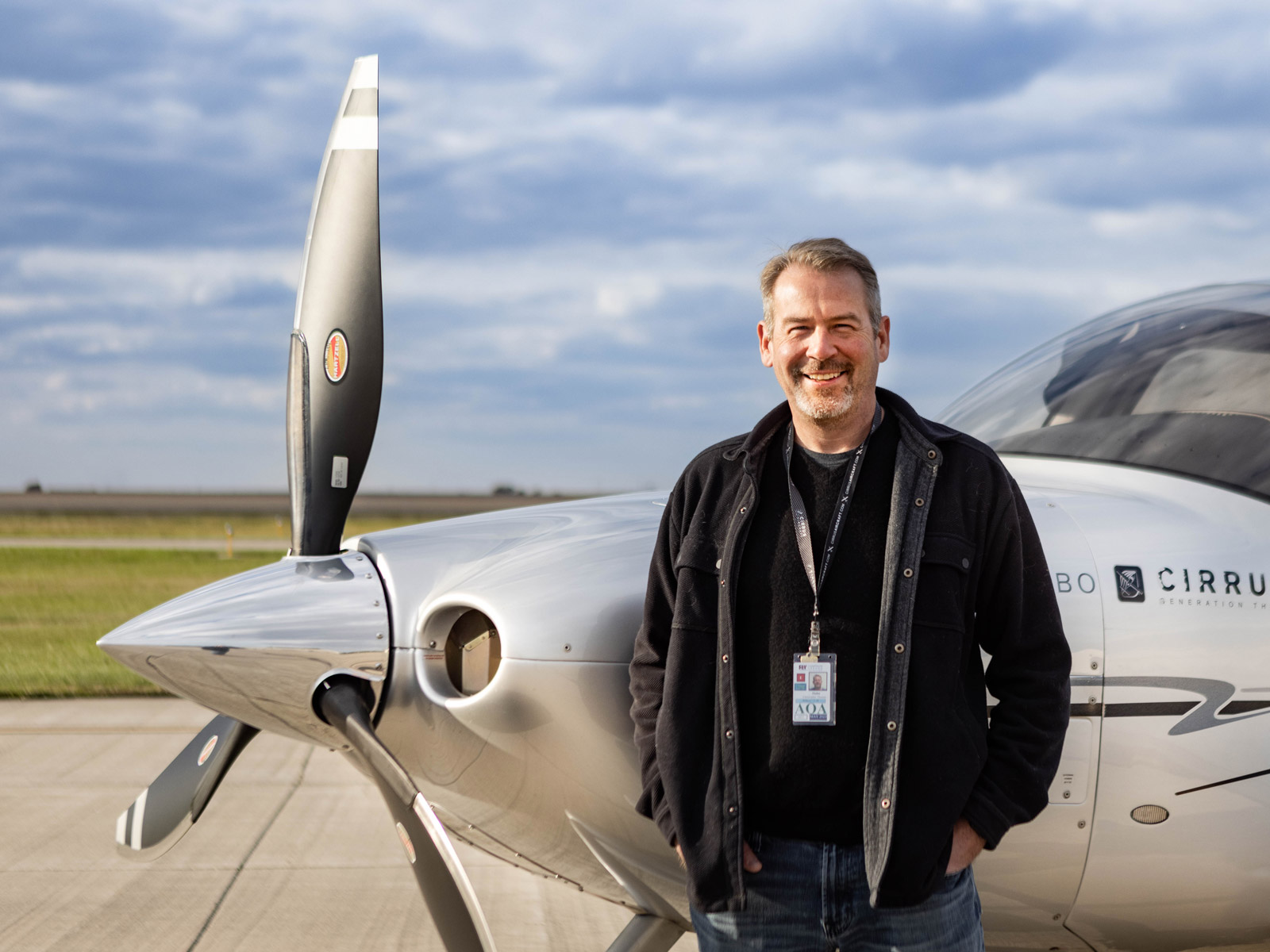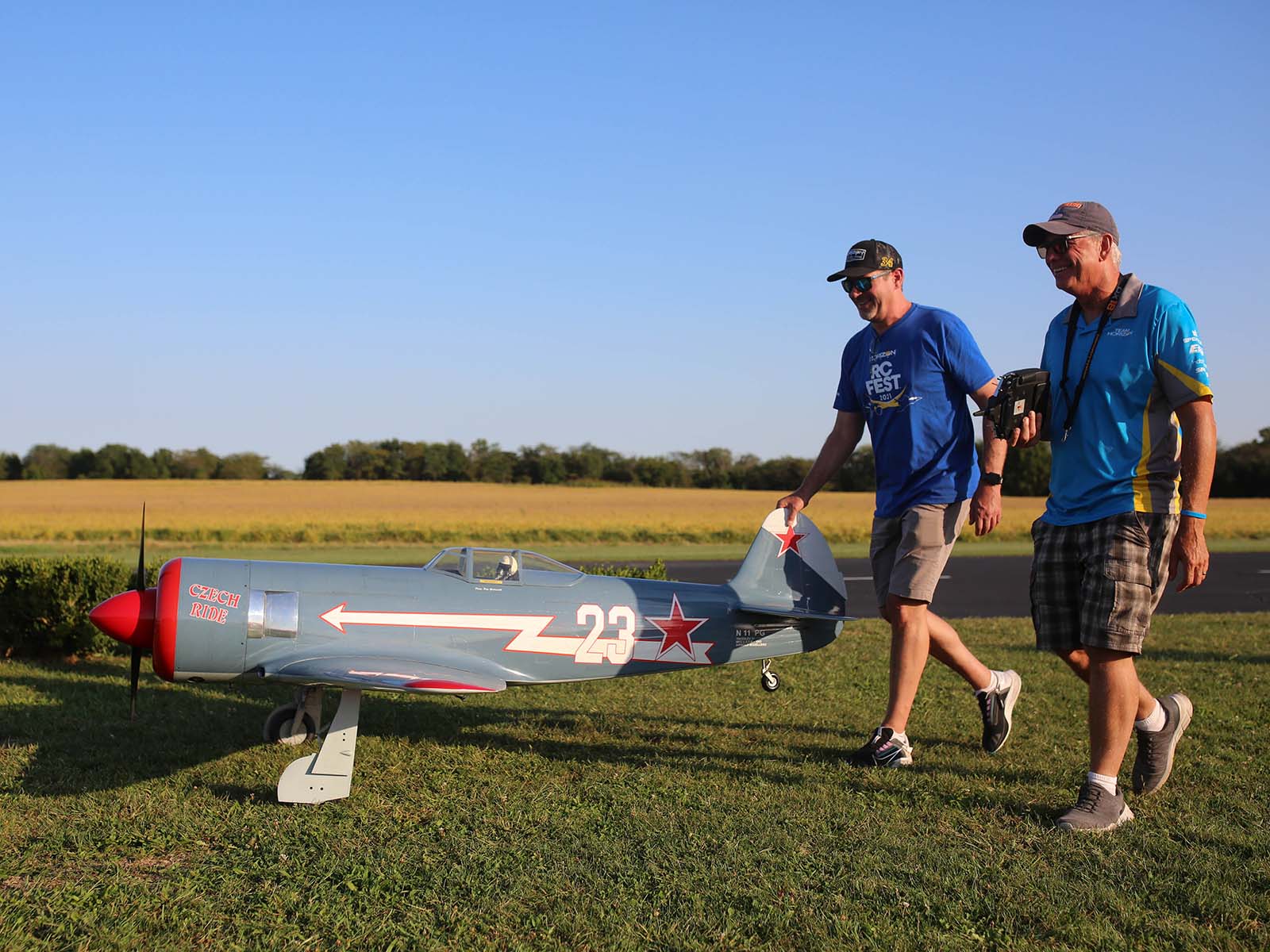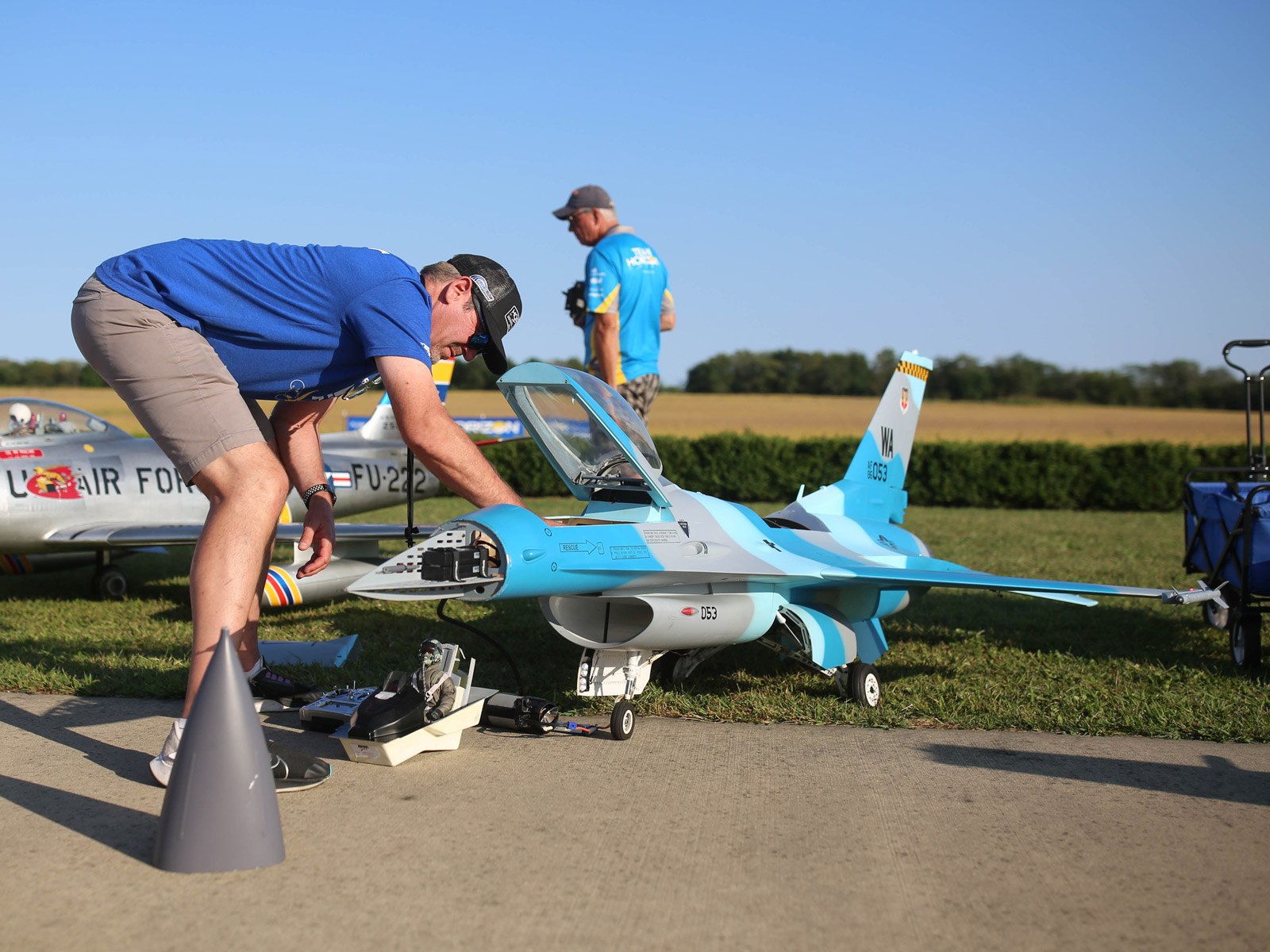Always in the Air
Chris Huhn has flown them all, from balsa planes to RC jets to a full-scale Cirrus SR22 Turbo. He wouldn't have it any other way.
Words Sean McDevitt | Photos Rory Schweighart

There once was a fifth grader who, every day in class, would “fly” his pencil in the air pretending he was in control of not a rocket ship or a daredevil motorcyclist but a plane. Not even a fighter jet.
His imagination would put him at the controls of that “plane,” and he'd explore not only what it would take to go left or right and forward but up and down too. Because for this youngster, it was not about being in an X-Wing or an F-16 and flying fast and taking down the enemy. It was all about simply flying in three dimensions, which fascinated him.
It was this fascination that got Chris Huhn into flying radio control and, ultimately, flying full-scale aircraft.
Being curious, Huhn wondered about how birds flew in the air. It took a middle school assignment to help him find his answers.
“I was in the sixth or seventh grade, and I wrote a paper about how airplanes fly,” said Huhn. “I wanted to learn. I'd find a word like ailerons, and I was like, 'how do you pronounce that?'”
Flying happened to also be in the family. His uncle was an airline pilot for American and flew during World War II. Around the same time he was researching his airplane paper, Huhn, his uncle, and one of his uncle's friends went up in a Cessna 172.
Huhn said, “He came and visited, rented a plane near our house, and took us flying out over Lake Michigan. I'd never been in a plane before at that point. It was just this completely new experience. I remember looking out the front window of the airplane, seeing all these controls, and the feeling of being up in the air.”
Jumping ahead to college, Huhn was convinced by his father to pursue aerospace engineering to merge his love for aviation with a career path that offered several different opportunities. It wasn't Huhn's first choice.
“Before I decided to go to school for engineering, I was going to go to aviation school,” said Huhn. “I got accepted to Embry–Riddle Aeronautical University in Daytona Beach. I was really happy about that, but my dad was not as happy.”
Huhn says his father saw more than a pilot's life for his son and encouraged using an engineering degree in the business world. He chose engineering, but the flying bug never left.
In college, Huhn started flying radio control. He had dabbled with it before, but a couple of years into college, he wanted to learn. The problem was that there wasn't an RC campus organization or group of like-minded enthusiasts he could turn to. He says he probably went through five or more planes trying to figure it out before, ultimately, finding someone at school to help him learn to fly RC.

Huhn said, “I was about two years into engineering school, and at the same time, I was taking flying lessons on my own outside of that. I got my private pilot license in 1991. I was doing the RC thing, the full-scale thing, and studying aerodynamics all at the same time.”
The real pivot point for Huhn was when he answered an employment ad for Bob Violett Models.
“The biggest change for my radio control life was when I was in college,” said Huhn. “I walked into a hobby shop, and there was an ad on the window that said Bob Violett Models was hiring. They were looking for somebody who could run machines, and I could run lathes, mills, and all kinds of machine tools. I walked into Bob Violett's house, where his shop was, and saw these fiberglass jets and said to myself these were the coolest things I've ever seen.”
Today, Huhn flies radio control jets, his favorite being a 1/16-scale F-16 made by BVM. He's able to go out five or six times a flying season, including Florida Jets and Joe Nall.
Huhn said, “There's an event in Indiana and one in Mississippi that I like to go to. I try to go to events to hang out with people. There's a lot of camaraderie now that I've been in this circle of people who do jets since I was like 24 years old.”
When he was younger, he had to spend months building a kit, including the painting, power systems, and literally creating everything from scratch. With today's plug-and-play jets available and limited time, Huhn prefers flying to building.
That limited time competes directly with his full-scale flying.
Huhn has owned three full-scale planes. His first was a sporty Grumman TR-2, a two-seat airplane with a bubble canopy and a low wing. It was fun to fly, but there were better airplanes for traveling. His second was a Cirrus SR20, which Huhn says was one of the coolest airplanes you could buy. Today, he owns a newer version, a Cirrus SR22, which offers higher performance, advanced avionics, and a parachute.
“If you want to travel in an airplane, that's pretty much in my book, the safest way to do it because it features the most modern systems and a parachute as backup,” said Huhn. “Normally, I like to fly to Florida probably six or seven times a year to see family. I go out to Colorado to see family and go skiing. I've had it pretty much everywhere in the US, but those are my normal trips. It's pretty convenient. I can put my bag in the back seat and go anywhere.”
Starting to fly with radio control made flying full-scale easier than you might imagine. Huhn says he could fly decently in the air with RC, which translated to full-scale in terms of pitch, power, and angle of attack. In fact, the skills carried over so well that he was soloing a full-scale airplane in about seven hours.
Huhn said, “They said, 'You're pretty good at flying it. Go on solo the thing.' And that's maybe unheard of today. In terms of mastering flight, RC taught me almost everything.”
He believes there's a connection between pilots who fly RC and those who fly full-scale. For example, crosswind landing techniques are nearly identical.
“Crosswind landing techniques translate between the two--whether you're going to crab or slip,” said Huhn. “So, if you get a crosswind, you can let it crab. The nose isn't pointed at the runway, but the airplane's track is. When you get over the runway, you apply the opposite rudder, get it straightened out, and touch down with the upwind wheel into the wind. So that's something that plays out well in a full-scale airplane. And then when you apply that to a model experiencing the same conditions, you're like, 'Wow, it works on a model too.'”
Huhn sits back with a smile when asked to reflect on that fifth grader wanting to fly and what advice he'd give him.
Huhn said, “Stick with your dreams. I would say it to anybody. If you want to wind up somewhere, don't lose sight of it. It may not be the path that you think, but if you keep that goal in sight, you can get there.”
